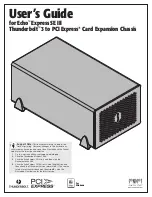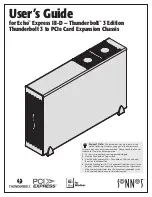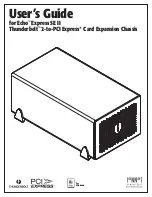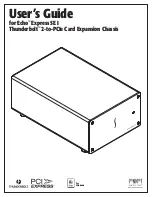
Using iLO 2 110
During boot and MS-DOS sessions, the Virtual Floppy device appears as a standard BIOS floppy
drive. This device appears as drive A. If a physically attached floppy drive exists, is obscured and
unavailable during this time. You cannot use a physical local floppy drive and the Virtual Floppy
simultaneously.
•
Windows Server® 2008 or later and Windows Server® 2003
Virtual Floppy and USB key drives appear automatically after Microsoft® Windows® has
recognized the mounting of the USB device. Use it as you would a locally attached device.
To use Virtual Floppy during a Windows® installation as a driver diskette, disable the integrated
diskette drive in the host RBSU which forces the Virtual Floppy to appear as drive A.
To use Virtual USBKey during a Windows® installation as a driver diskette, change the boot order of
the USB key drive in the system RBSU. HP recommends placing the USB key drive first in the boot
order.
•
Windows Vista®
Virtual media does not work correctly on Windows Vista® using Internet Explorer 7 with Protected
Mode enabled. If you attempt to use virtual media with Protected Mode enabled, various error
messages appear, including
could not open cdrom (the parameter is incorrect
. To
use virtual media, click
Tools/Internet Options/Security,
clear
Enable Protected Mode,
then click
Apply.
After disabling Protected Mode, you must close all open browser instances and restart the
browser.
•
NetWare 6.5
NetWare 6.5 supports the use of USB diskette and key drives. See "Mounting USB Virtual
Floppy/USBKey in NetWare 6.5 (on page
110
)" for step-by-step instructions.
•
Red Hat and SUSE Linux
Linux supports the use of USB diskette and key drives. See "Mounting USB Virtual Media/USBKey in
Linux (on page
111
)" for step-by-step instructions.
Operating system USB support
To use virtual media devices your operating system must have support for USB devices. Your operating
system must also support USB mass storage devices. Currently, Windows Server® 2008, Windows®
2003, Red Hat Enterprise Linux 3, Red Hat Enterprise Linux 4, Red Hat Enterprise Linux 5, SUSE SLES 9,
and SUSE SLES 10 support USB devices. Other operating systems may also support USB mass storage
devices.
During system boot, the ROM BIOS will provide the USB support until the operating system loads. Since
MS-DOS uses the BIOS to communicate with storage devices, utility diskettes that boot DOS will also
function with virtual media.
NOTE:
Red Hat Enterprise Linux 3 will not allow you to provide a driver diskette using virtual
media.
Mounting USB Virtual Floppy/USBKey in NetWare 6.5
1.
Access iLO 2 through a browser.
2.
Select
Virtual Media
in the Virtual Devices tab.
3.
Insert the media into the local floppy drive, select a diskette drive, and click
Connect.
Alternatively,
select a diskette image to be used and click
Connect.








































